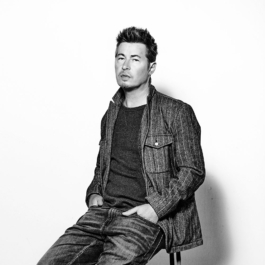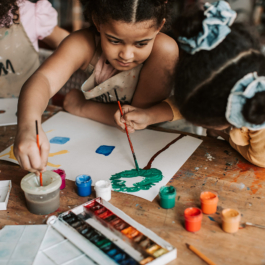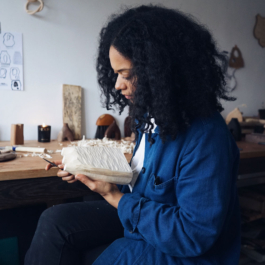It’s undeniable: Learning a foreign language changes your life. It provides you with a new cultural dimension and sense of community spirit. It enhances your resume, inspires new travel plans (maybe even paving the way for moving abroad) and, above all, makes you think in a completely different way.
Of course, studying a language means investing time in it, at least in the short and medium term. And let’s be honest: mastering a foreign language’s complex nuances usually requires years of practice. The good news, however, is that it’s possible to build up the basic foundation of a new language, enough to communicate in everyday life, in a limited timeframe.
To show you it’s feasible, I tried it myself. Over a period of 10 days, I challenged myself to learn a language I always dreamt of: Portuguese. Speaking four languages already has provided me with a few insights on what to look for when starting out – here is what I went for my fifth time around.
Day 1: Choose Wisely & Get Started
Why did I choose Portuguese? First of all, I like it. I highly recommend picking a language that motivates you. To me, Portuguese is key to understanding the culture of Portugal, a country I have visited numerous times and considered moving to.
Other key considerations influencing my choice are the fact that this language uses the same graphic alphabet as other languages I speak, and that I am fluent in two other languages of the same family (French and Italian). Setting reasonable expectations is absolutely essential to avoid disappointment when learning a language.
Once you’ve made your choice, start with standard greetings, subject pronouns and the present tense of the verbs to be and to have. These are some of the fundamental building blocks of sentences in most languages. (There are many online dictionaries that will help you with this; Wordreference.com is a good resource.)
Day 2: Some Important Realisations
Each language expresses a slightly different worldview (its ontology), influenced by history and culture. An example of this is the fact that each language has words (read: concepts) that are specific to it, typically those which are impossible or difficult to translate. Saudade, for instance, means longing in a bittersweet way, with a distinct melancholic yet appreciative nuance.
When dealing with new languages, I find it beneficial to gain a solid grasp of its underlying culture as early as possible, to form a new mindset I can shift into. I think of it as wearing a superhero suit. Expecting to use a certain idiom in the same way as our native language invariably leads to frustration, for each language is a world unto itself.
Dedicate a couple of hours to studying the history and culture of the respective country to start developing a feeling for it. Mark down all the words you encounter which are left untranslated, and try to explain them in your native language.
Day 3: Basic Syntax + Vocabulary
I will let you in on a secret: Grammar is neither difficult nor boring if you know what to look for. Dedicate 30 minutes to studying the basic syntax of your language of choice. How is a (simple) sentence formed? Which order do you need to follow? Can you omit the subject?
As for vocabulary, I started with memorising 10 adjectives, 10 common nouns with their respective articles, and two common verbs conjugated in the present tense. Adjectives are a gratifying stepping stone: They allow you to form basic sentences right from the beginning. In Portuguese, I can now form sentences by following the structure: subject + to be + adjective, such as “Eu sou feliz” (“I am happy”). That does indeed make me happy.
Day 4: Declension
No need to get scared: Declension is about modifying a word to express number (singular or plural), gender and case (nominative, accusative, etc.). Number and gender are key to avoid ambiguity, so we will give them priority. How many genders (if any) does the language you’ve chosen have? How do you form the plural of nouns? Is there a universal way to decline adjectives?
Learn how to express number and gender in nouns and adjectives. Then, go back to the 10 nouns you have learned, and look up their gender. Now you can form some basic sentences with them and the adjectives you have learned, declining them based on number and gender, where appropriate.
Day 5: Places And Prepositions
Learn 10 common nouns for places (such as school, office, cinema, market, etc.), the equivalents of the prepositions from, to, of and in, and the verb to go conjugated in the present tense. Then, find out where to position places in a sentence. Don’t worry about case for now.
When I think about Portugal, I often go back to memories of the Bolhao market in Porto, where I first learnt to make caldo verde, a Portuguese soup. Leverage your memories or inspiration to learn words that matter to you.
Day 6: Musical Intermezzo
We’re halfway through our journey, and it’s time for a fun activity: Listening to some songs. Consider it an introduction to pronunciation. I recommend first listening to a song without reading the lyrics, then again with them. Now, try singing along to it. You will quickly notice how certain letters sound, and how to pronounce syllables. Do you notice how letters are pronounced differently depending on the syllable they are in?
We are aiming to get a feeling for the sound of the language here, so for now, try not to pay attention to understanding words or memorising them. Isn’t this fun? Try repeating this exercise with 3-5 songs.
Day 7: Time
Having learned about places, expressions of time are the natural next step. This means learning the words for today, last week, last month, last year and at least the past tense of the verbs you already know: to be, to have and the two additional verbs of your choice.
Day 8: Frequently Used Words
Now that you can form basic sentences, let’s work on further enriching your vocabulary. All languages have a number of words and short expressions that are most frequently used, things like yes, no, thank you, please, I’m sorry, maybe, you’re welcome, my name is, the numbers from one to 20, and many others. Try finding as many as you can.
In addition, I recommend learning some words related to your personal life, work and interests. You can use them to introduce yourself.
Day 9: Sentences, Sentences, Sentences
You now have enough material to form sentences in the language: time to exercise your language muscles. Start with writing down 20 sentences about your everyday life, and see which words or grammar rules you’re still missing. You might have to stick to simple sentences – that is a very important exercise to repeat to make sure you master the basics.
Day 10: Your Final Exam
Learning on your own is fun, but as for every endeavour in life, it’s difficult to improve without confronting your knowledge with others and obtaining feedback. A fun and free way to do so is by finding a pen pal. It can be extremely rewarding, and it works equally well via email.
You can look for a pen pal on a number of websites such as Compatipal, which matches you with other people based on your shared interests. If you’re a fan of letters and postcards, PenPal World and Postcrossing might be better solutions for you.
No matter the platform, pick a pen pal and write them an email, a letter or a postcard. It’s a way to practice all you’ve learned so far, and possibly gain some new friends.
Sent? Well done! You’ve completed the challenge. Now where is that travel guide?
Bonus: Online Resources
Language-learning apps like Duolingo can be useful to practise on your commute or while you’re queuing. You might also want to look into podcasts: There are several about languages, and are purposely realised to be easy to understand. Whatever you choose, just make sure to continue practising as often as possible, ideally every day.














Sorry, the comment form is closed at this time.